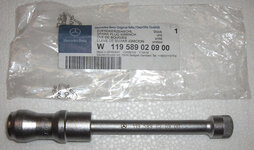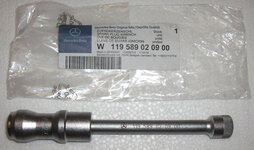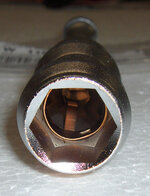Jon, the spec of 25-30 Nm is accurate, but is only valid for dry threads. I do not use anti-seize and always install new plugs dry (and, gapped to 1.0-1.1mm). See the PDF attached to post #29 above. And yes, the M119 plugs are the gasket type.
From memory, with dry threads and ~25 Nm setting on the torque wench, theres roughly 1/2 turn from first contact of the gasket to the wrench clicking, with NEW plugs. After the gasket is compressed the first time, subsequent installations will have much less rotation to achieve the same torque value.
If you do use anti-seize, use as little as possible (super thin coating). If not using a torque wrench, use your calibrated arm to feel when the gasket has compressed (not easy if you arent Klink). If using a torque wrench, I would cut the torque spec in half, set your wrench for 12-15 Nm. Be careful with anti-seize! You really dont want stripped threads. Ive never seen a plug seized in an M119 and would recommend to skip the anti-seize and install try, to factory torque spec.
























